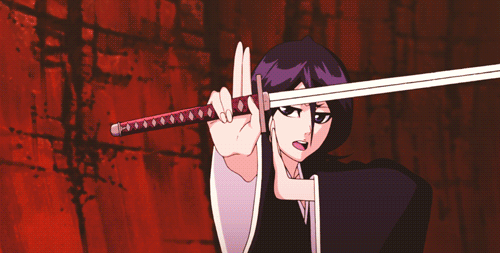BLEACH SPOTLIGHT: KIDO
THE POWER OF THE DEMON ARTS
year 15, month 4
written by
Seji Midori
Seji Midori
HADO: THE OFFENSIVE MIGHT OF KIDO
Hadō spells are designed for offence, unleashing destructive power to vanquish your enemies! Among the most iconic Hadō spells is Hadō #90, Kurohitsugi (Black Coffin), which engulfs the target in a black, coffin-like structure before inflicting severe damage upon them. This spell, like many high-level Hadō techniques, requires immense spiritual pressure and precise incantation, meaning several years of study at Shin’ō Academy, on top of great talent and skill! Some of you might recognise this spell as the one Aizen used on Ichigo Kurosaki when he fused with the Hōgyoku. Clearly, it wasn’t very effective! Another popular Hadō spell is Hadō #33, Sōkatsui (Blue Fire, Crash Down), which fires a powerful blue flame at the target, exemplifying the elemental versatility within Hadō spells. The Kuchiki Clan are especially good at this spell, which is why we have mostly seen both Byakuya and Rukia using it.
BAKUDO: THE KIDO ART OF RESTRAINT
Bakudō spells focus on binding and immobilising opponents, providing strategic advantages in battle. For example, Bakudō #1, Sai (Restrain), is a fundamental spell that binds the target's arms behind their back, often used for capturing or disabling opponents. This was the very first spell we ever saw used in the series, again, on Ichigo (that poor boy). On the higher end of the spectrum, Bakudō #81, Danku (Splitting Void), creates an energy barrier capable of blocking destructive spells. Bakudō techniques demonstrate the tactical skills required of a Soul Reaper, allowing them to control the battlefield and subdue adversaries without direct confrontation or physical combat.KAIDO: THE HEALING HAND
Even though Hadō and Bakudō are the two prime parts of Kidō, Kaidō spells are the healing arts of Kidō, essential for the recovery and support of injured comrades and also just as important as the other two! Though less frequently showcased, these spells are crucial in the aftermath of battles, ensuring the survival and well-being of comrades. Kaidō practitioners, who are often members of the 4th Division, are trained to heal wounds, purge toxins, and stabilise spiritual pressure, playing a vital role in the sustainability of Soul Society's forces.
KIDO'S PLACE IN WORLD OF REAPERS
Mastering Kidō requires rigorous training, exceptional spiritual power, and a deep understanding of the intricate incantations that amplify the potency of each spell. Skilled Shinigami can even cast Kidō without incantations, a great testament to their proficiency and control. So, how is it that you can learn Kidō? We have all the resources you might need here on World of Reapers!Kidō is only one of the many subjects we teach at Shin’ō Academy, but it is one of our longer courses, with seven different years available as you learn all the ins and outs to becoming a Soul Reaper! Not only that, but we teach all clans the skills how to wield Kidō – instead of just our Shinigami friends like in the past! Now Quincy, Arrancar, Fullbringer students and even Witches can learn the Demon Arts too!
did you like this blog?
Our Social Media Team is looking for new members to help us write blogs and managing our Instagram and Tik Tok accounts, could that be you? If so, send an inquire to either Seji Midori, Sayuri Miho or Arata Saito to learn how to apply and what it means to be part of the team.